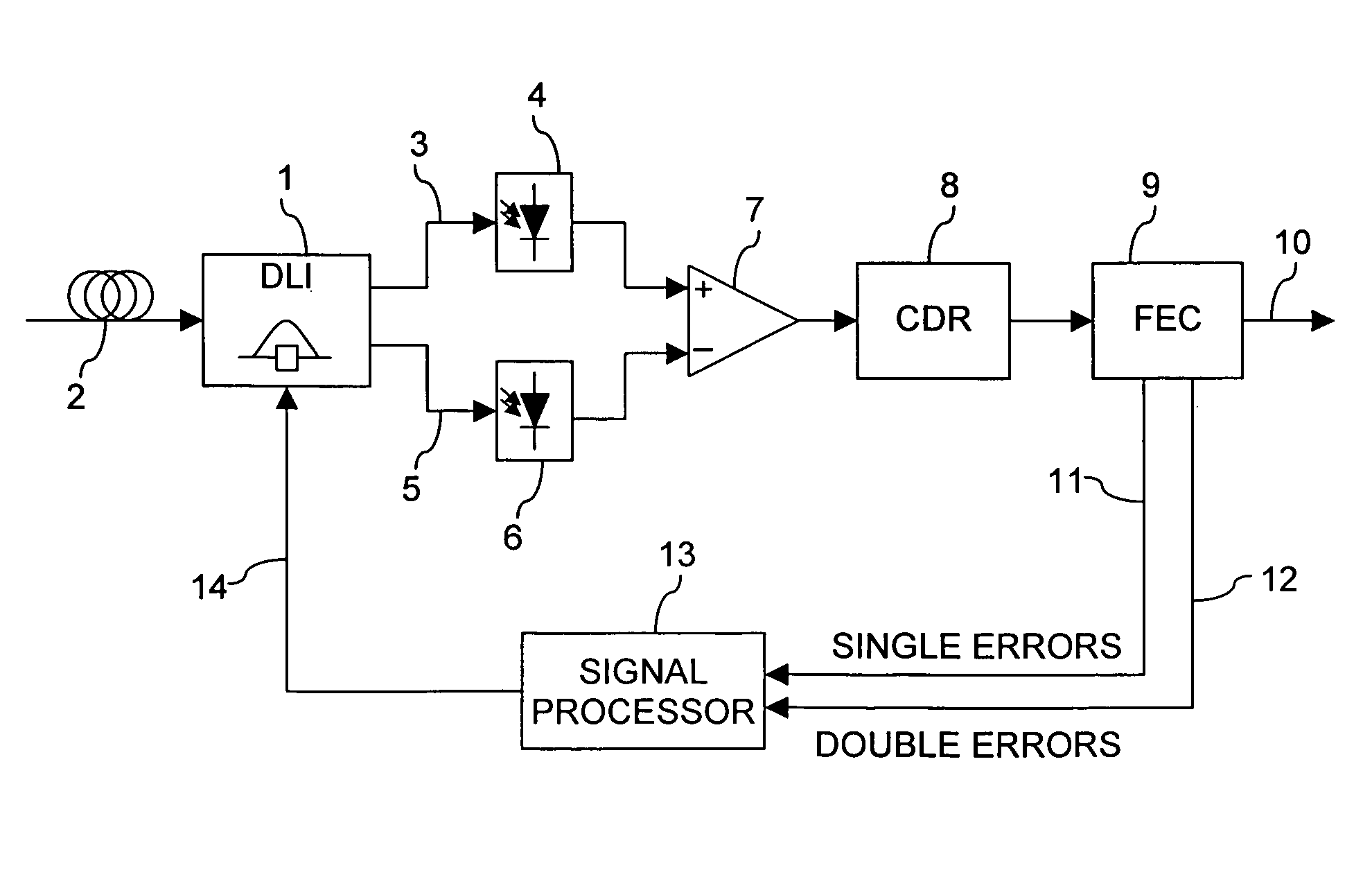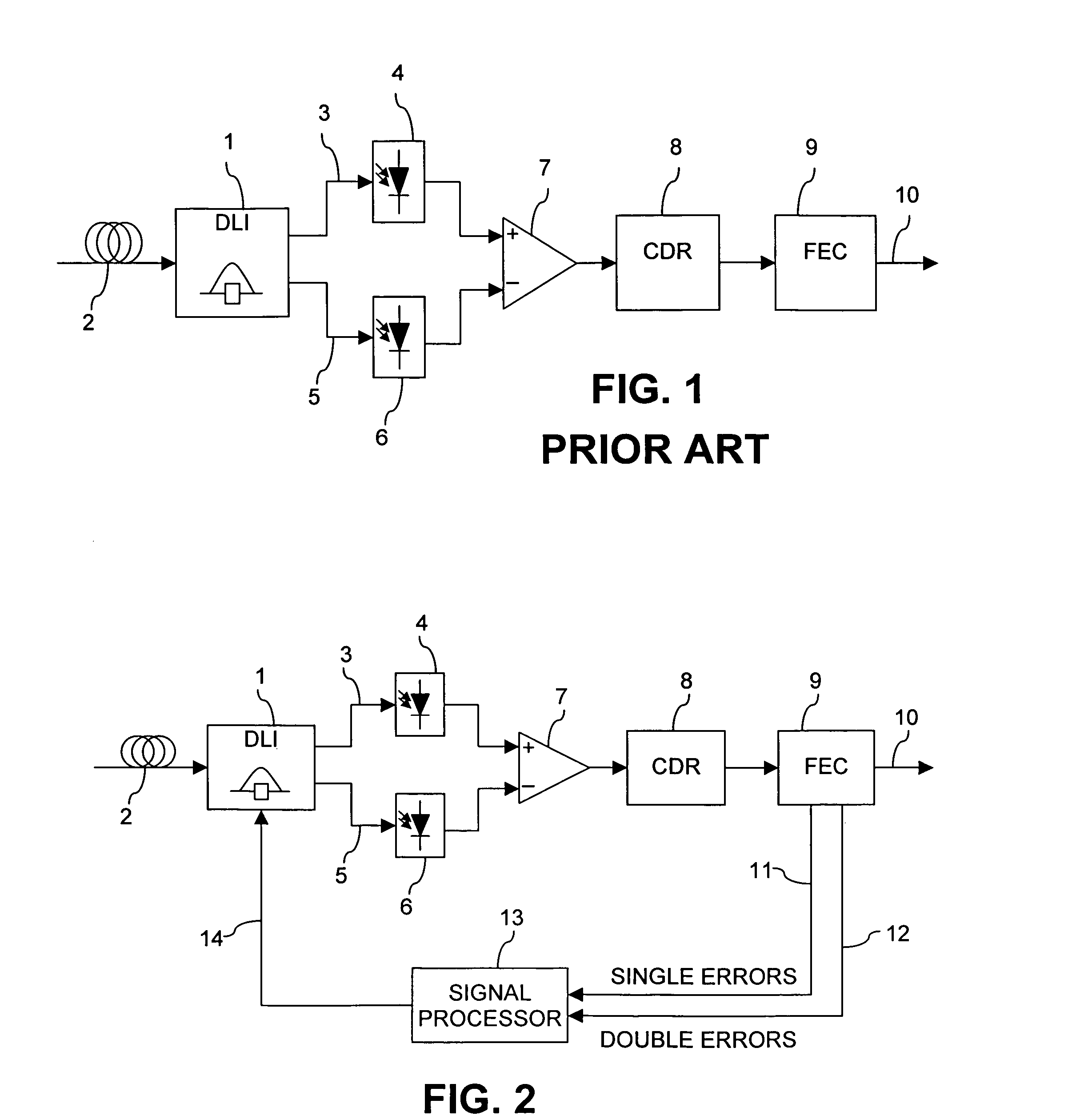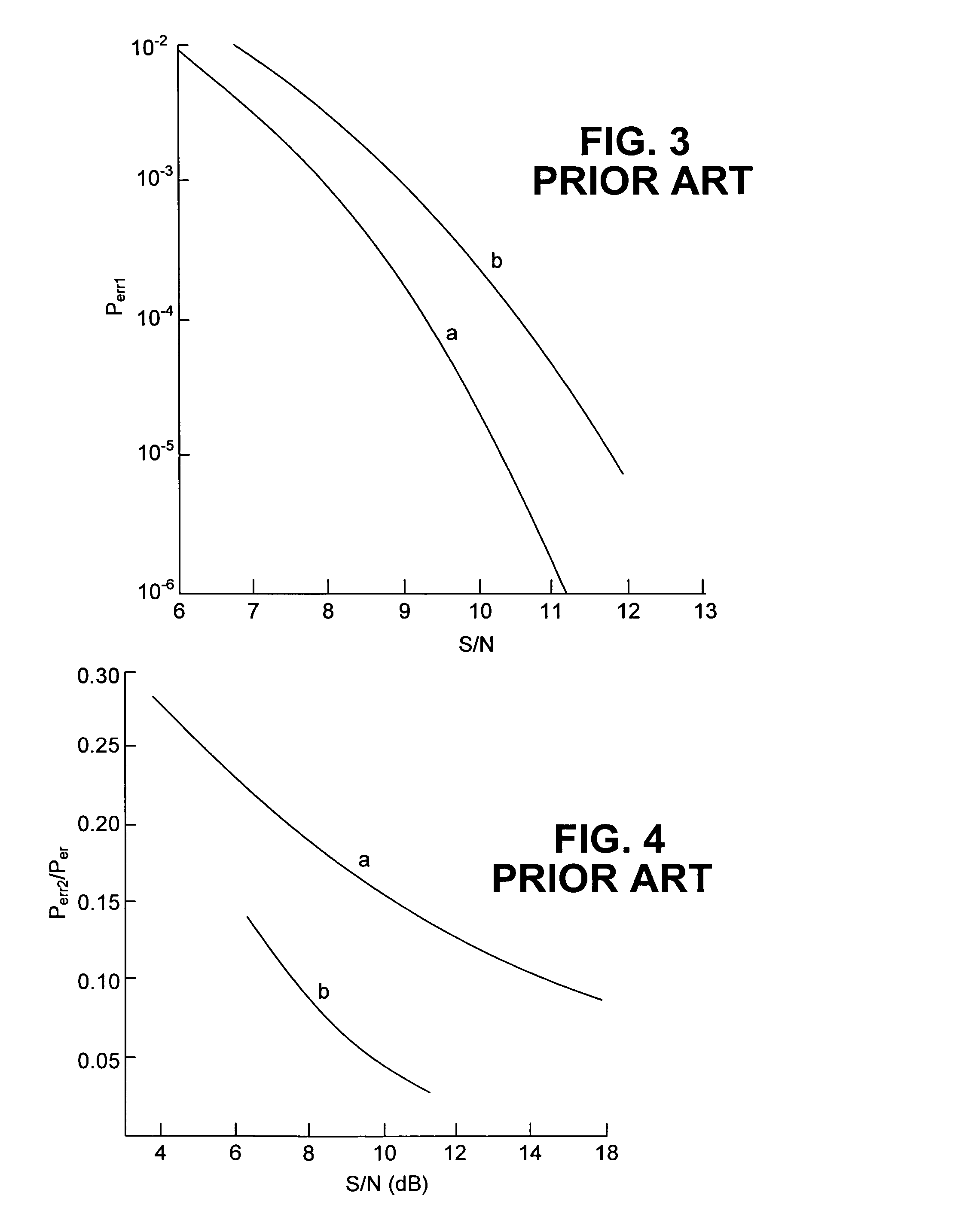Control of delay line interferometer
a delay line and interferometer technology, applied in the field of data transmission, can solve the problems of substantial extra expense, difficult to transfer automatic control methods in receiver equipment, and the sensitivity of dli to the setting of delay, and achieve the effect of simple error counts and cost reduction
- Summary
- Abstract
- Description
- Claims
- Application Information
AI Technical Summary
Benefits of technology
Problems solved by technology
Method used
Image
Examples
Embodiment Construction
[0019]FIG. 1 shows the general layout of a receiver for optical DPSK signals. A delay-line interferometer (DLI) 1 is connected to receive optical DPSK signals from an optical fiber link 2. The DLI is constructed on the principles of a Mach-Zehnder interferometer, with one arm incorporating a delay of one bit length of the DPSK signal relative to the other arm.
[0020]The DLI has a sum output 3 which provides a signal which is the sum of the optical signal in one bit period with the optical signal in the next bit period, and is therefore of high intensity when there is no phase difference between the optical signals in the two bit periods, and of approximately zero intensity when there is a phase difference of π radians between the two signals. The signal from the sum output 3 is applied to a first photo-detector 4 which detects the signal. The DLI also has a difference output 5 which provides a signal which is the difference between the optical signal in one bit period and the optical...
PUM
 Login to View More
Login to View More Abstract
Description
Claims
Application Information
 Login to View More
Login to View More - R&D
- Intellectual Property
- Life Sciences
- Materials
- Tech Scout
- Unparalleled Data Quality
- Higher Quality Content
- 60% Fewer Hallucinations
Browse by: Latest US Patents, China's latest patents, Technical Efficacy Thesaurus, Application Domain, Technology Topic, Popular Technical Reports.
© 2025 PatSnap. All rights reserved.Legal|Privacy policy|Modern Slavery Act Transparency Statement|Sitemap|About US| Contact US: help@patsnap.com



